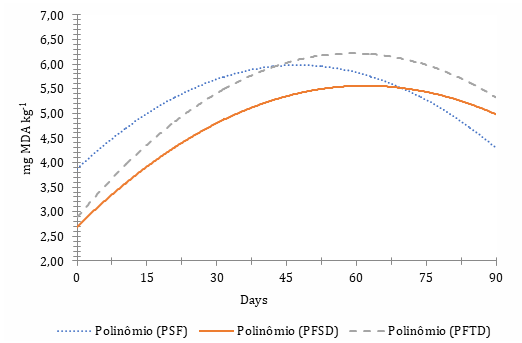Elaboration of pâté using fish residues
DOI:
https://doi.org/10.21708/avb.2021.15.3.9421Abstract
Knowing the potential of fish waste for the preparation of pâtés, there is the possibility of adding greater sustainability to the aquaculture sector. The aim was to prepare pâtés from fish processing residues with the inclusion of smoked fishmeal and evaluate their sensory, microbiological, physicochemical, and shelf-life characteristics. Three treatments were used: pâté without fishmeal inclusion (PSF), with smoked salmon carcass meal inclusion (PFSD), and smoked tilapia carcass meal (PFTD). The inclusion of the flours reduced the moisture, carbohydrate, and water activity. However, they increased the ash, salt, and collagen content. The lipid content was higher for the PFSD. The PSF showed peak oxidation at 15 days and the PFSD and PFTD around 45 days over the course of the 90-day shelf-life. The luminosity and b* coordinate were lower for PFTD, while the a* coordinate was higher for PFSD. Only the b* coordinate showed changes in PSF and PFSD throughout the 30 days of shelf-life, and its color tended to yellow at 15 days. The sensory analysis did not differ statistically between treatments (p > 0.05) for all attributes, except color, where the highest score was attributed to PSF. As for the overall impression, PSF also obtained the highest score, which may be associated with its color. By including fish flours, the nutritional composition and color of the tilapia-trimmed pâtés are changed, achieving an average acceptance level of 67%.Downloads

Downloads
Pubblicato
Fascicolo
Sezione
Licenza
Autores que publicam na Acta Veterinaria Brasilica concordam com os seguintes termos: a) Autores mantém os direitos autorais e concedem à revista o direito de primeira publicação, com o trabalho simultaneamente licenciado sob a Licença Creative Commons Attribution que permite o compartilhamento do trabalho com reconhecimento da autoria e publicação inicial nesta revista. b) Autores têm autorização para assumir contratos adicionais separadamente, para distribuição não-exclusiva da versão do trabalho publicada nesta revista (ex.: publicar em repositório institucional ou como capítulo de livro), com reconhecimento de autoria e publicação inicial nesta revista. c) Autores têm permissão e são estimulados a publicar e distribuir seu trabalho online (ex.: em repositórios institucionais ou na sua página pessoal) a qualquer ponto antes ou durante o processo editorial, já que isso pode gerar alterações produtivas, bem como aumentar o impacto e a citação do trabalho publicado (Veja O Efeito do Acesso Livre).


 Esta obra está licenciada com uma Licença
Esta obra está licenciada com uma Licença 